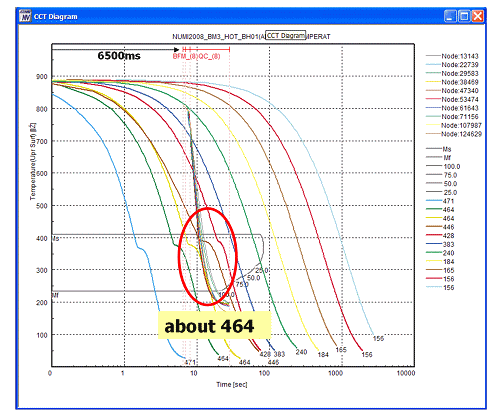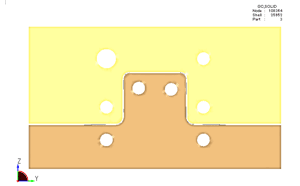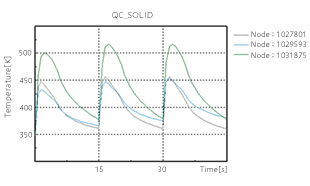
[Case study] Hot stamping
- Category
-
- Manufacturing trends
Consideration of temperature dependency of the material and heat transfer to the tool
Hot stamping is a forming method that reduces springback. The process involved is as follows: preheat a sheet material up to austenite temperature first; then perform hot forming followed by tempering with rapid cooling to obtain a high-strength sheet panel.
JSTAMP can consider temperature dependency of the material and heat transfer to the mold by using thermal-structural interaction analysis.
A tool model built with solid elements can be used to evaluate the temperature distribution history during multishot.
Hot stamping of B-pillar
 Vickers hardness prediction based on CCT diagram
Vickers hardness prediction based on CCT diagram
This example involves a hot stamping simulation using the Benchmark test model 3 (BM3) presented at the Numisheet 2008 international conference. JSTAMP can animate changes in the temperature distribution. The Continuous Cooling Transformation (CCT) diagram evaluation feature, which predicts quenching at a given location in the model based on Vickers hardness, is useful as well. In this example, the predicted Vickers hardness was 464, which agrees with the experimental result.
Behavior during draw forming
Change in material temperature during forming
Change in temperature during tempering and after preforming
Tool temperature history during multishot
 Model built with solids
Model built with solids
A tool model built with solid elements can be used to evaluate the temperature distribution history during multishot.
 Tool temperature history
Tool temperature history
Tool temperature distribution
Case list
- Customer Applicasions
- Case study
-
- Improve QCD (Quality, Cost, and Delivery) in the early phase
- Realistic reproduction of forming process and evaluation
- *Product names and service names are the trademarks or the registered trademarks of their proprietors.




